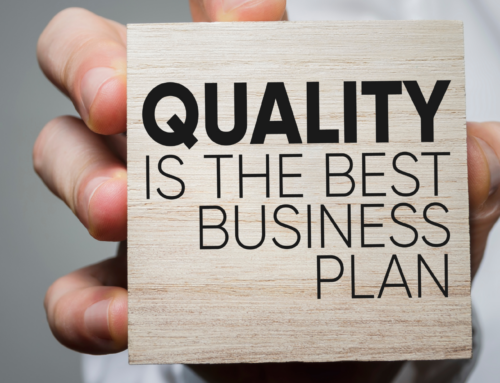Is it Possible? High Quality Products at an Affordable Price?
Do cheap prices scare you? Does the “You get what you pay for” resonate? Do you tend to avoid low-cost products because you relate inexpensive for poor quality? What has been ingrained into our beliefs that high quality equates to fancy is changing as manufacturers and businesses strive to stay competitive for consumers. When you go to purchase a product, frequently, price and quality go hand-in-hand. We consider the price of the product and think of the product’s quality. If the product’s cost is high, it must mean that the product is of high quality and vice versa; if the product is of poor quality, its price will be low. However, that’s not entirely accurate.
So what’s trending? As companies strive to remain competitive by offering consumers the lowest price point possible while producing high-quality products with top-of-the-line features, how can they afford this? How is investing in a quality product going to end up saving your company money?

April 8, 2021
![]()
How are businesses able to produce products with premium features, meanwhile selling at a consumer-friendly price?
Minimize Your Production Costs
Many aspects control production costs. Ultimately a positive working relationship with your supplier is a great way to start. Here are several suggestions that our team has compiled to provide guidance:
- Larger orders of material often lower the cost per unit and entice suppliers to provide discounts. Many suppliers have established a MOQ or Minimum Order Quantity that is an average of the amount typically purchased for that particular product. MOQ’s are a solution that controls smaller orders, reduces operating expenses, and provides a more sustainable production approach. Inherently, MOQ’s give a more predictable and efficient way to order and manufacture products, providing your company with more opportunity to reap profitable benefits.
- How are your negotiating skills? While your suppliers aren’t in charge of raw materials costs, they control the cost of production and labor fees. It’s crucial never to undervalue your supplier or customer, and while it may seem like a fine line to walk, be wary of over-negotiating. Good negotiations can contribute to better cohesive relationships and the opportunity to control costs.
- Are you using the most expensive material for your product? Or, is there a high-quality alternative that is more affordable? Do your research! With ever-evolving technology and consumer demands continuously changing, it’s essential to make sure that your product evolves with your consumers. It’s undoubtedly worth your company’s time to review your products regularly and the processes to manufacture to ensure you’re maximizing your product’s efficiency. When manufacturing processes become inefficient, products that aren’t utilizing alternative materials become outdated and obsolete. Avoid spending money on what was popular and keep up with the current trends.
- Are you compromising on quality? How reliable is your quality assurance team? If you promise your consumers a high-quality product but continue to deliver defective products, it’s time to review your product’s quality approval process. Spending excess money on products that continue to defect is a way to damage consumer relationships and your brand’s reputation. Having a reliable and dependable quality assurance team and strict quality standards and procedures will make all the difference. Look at it this way; if you eliminate the extra costs for quality issues, this may, in turn, eradicate additional costs elsewhere, providing you and your customer an ensured high-quality product for less price.
- Fancy packaging? Of course, it may look incredible and set you apart from your competitors, but is it warranted? Does this unique packaging benefit the product or the consumer? Let’s get back to the basics. Eliminate the extra costs for fancy packaging and do what makes the most sense financially. Consider other alternatives for packaging that allow you to stand out from your competitors while simultaneously keeping in mind your company’s finances.
Stay Consistent For Loyal Fans & Brand Advocates
What’s the perception of your brand? Has your company been able to control the perception of prices over time? Or, have there been price adjustments overtime to entice people to buy your product?
While we often associate prices and the quality of a product, we’re quickly learning that prices do not always accurately reflect a product’s quality. Quality should always be at the forefront of your communication strategy. Establishing a perception of worth allows you to control how consumers perceive your product. By leading your consumers with quality, ultimately, they become brand advocates. Not only does this encourage repeat purchases, but it convinces others to become familiar with your brand and make purchases too. If your prices continue to be competitive and predictable, consumers are more likely to remain loyal fans because they know what they’re getting.
Consumers appreciate the consistency, and while supply and demand will always affect product price points, it should never involve your product’s quality. While prices may fluctuate with supply and demand, they should never affect the quality of your product. In keeping your costs competitive and consistent, minor fluctuations here and there due to market changes shouldn’t affect your consumer relationship. Consumers want durability and the assurance that they’re making a good investment in your product.
Trim the Fat, Reduce Waste
Many forms of waste can negatively affect your product’s cost, such as defective products and inadequate quality assurance, overstocking your products, and early production. While these are only a few examples, being mindful of these examples may help eliminate waste and extra costs to ensure you’re giving your customers the best price.
Having an unnecessary amount of product produced before you need it will ultimately lead you to congestion of funds. This is referred to as early production. While some businesses believe it’s better to have their products produced, “just in case,” sometimes being too prepared can cost your company, especially if you’re not selling a product as fast as you anticipated.
Early production can often lead to overstocking, which can negatively affect your companies’ financial status. Overstocking products raises economic costs because it eliminates warehouses’ ability to stock various inventory, risking that those items may become invaluable or obsolete over time. Instead, overstocking poses risks for increasing holding or carrying costs associated with the storage of unwanted inventory. Cashflow is the lifeblood in running a successful business, and without it, it may lead companies to struggle financially.
Defective or deficient quality products? While this may seem obvious, there are a lot of direct costs to consider such as: notifying consumers of the defective product, product recall, transporting and repacking defective products, disposal of the unwanted product, destruction of faulty products, and the development of a new product and product replacement. With all of this considered, the most powerful cost for poor quality is its damage to a company’s reputation and rebranding. This is why having a trusted source for Quality Assurance is such an advantage in maintaining good product quality and ensuring consistency in product costs.
How Can HB International Help You?
As a global manufacturing agency, we must select suppliers based on product quality and price. Since 2002, we have built solid and supportive relationships with our suppliers, communicating our expectations of high-quality products and competitive prices. While the cost of raw materials can fluctuate over time, affecting product manufacturing costs, HBI will ensure that product quality is never sacrificed. Our Project Managers work diligently to ensure prices remain consistent and competitive for our customers, just as our Quality Assurance team continues to inspect and monitor product quality and our suppliers.





